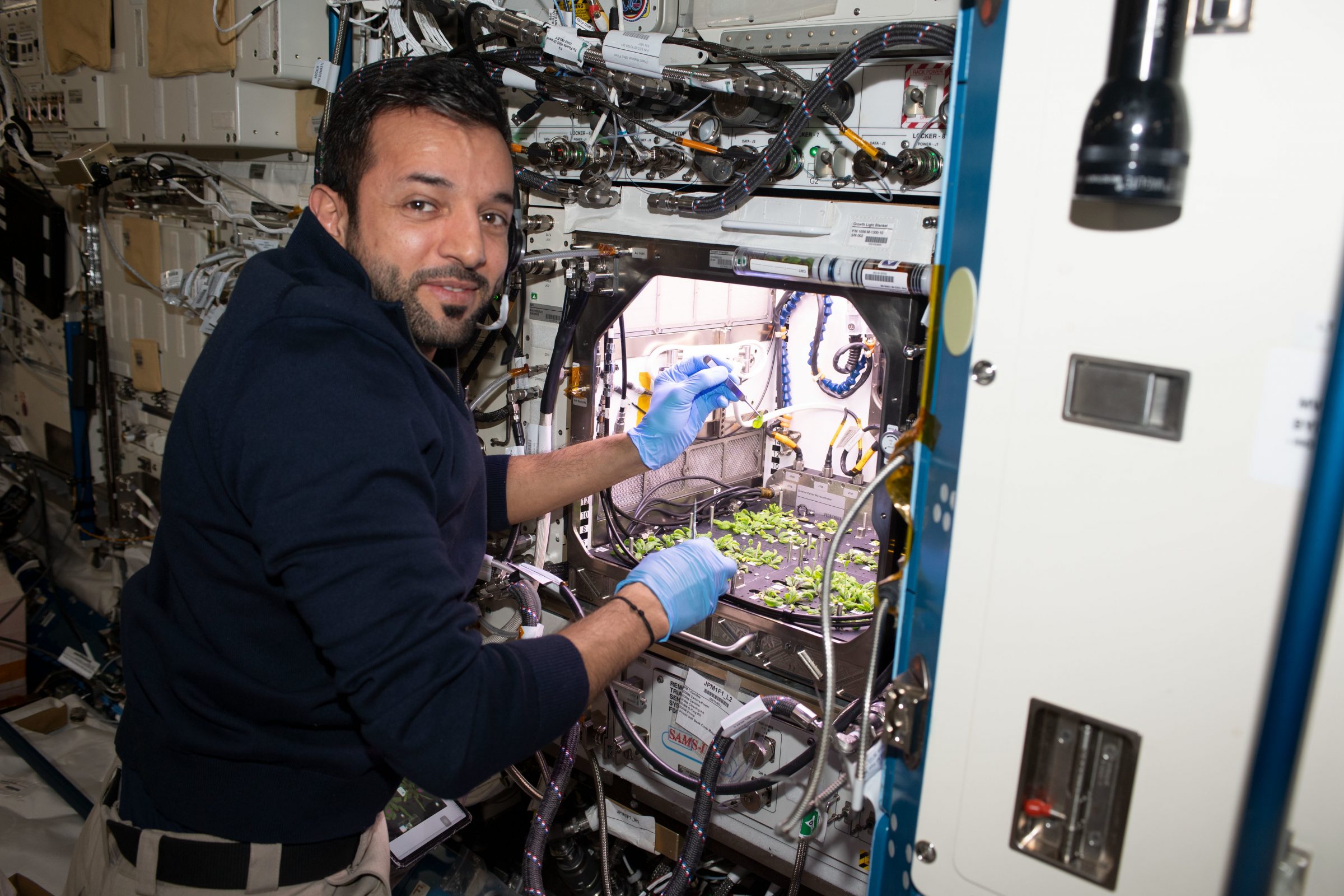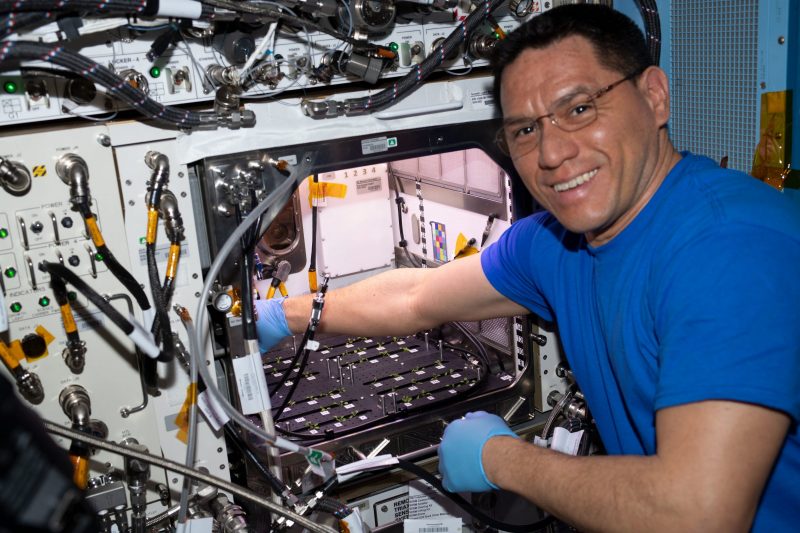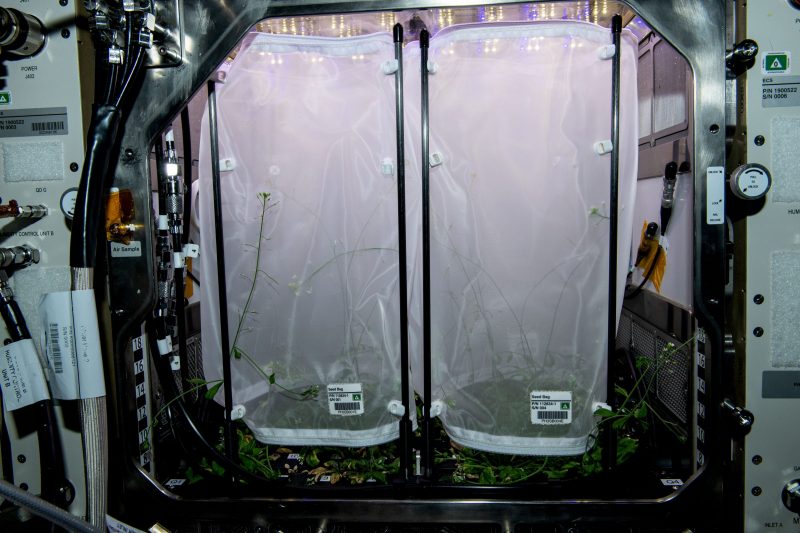
Studying plants in space can benefit our lives on Earth and on deep space missions.
The Plant Habitat-03-B (PH-03B) experiment uses NASA’s Advanced Plant Habitat (APH), an automated plant growth facility on the International Space Station (ISS) managed by Redwire, to investigate changes to how genes are expressed in plants exposed to the stresses of spaceflight and whether these changes are passed to later generations. Redwire is working with the University of Florida Institute of Food and Agricultural Sciences Principal Investigator (PI) Team of Dr. Anna-Lisa Paul and Dr. Robert Ferl for this latest investigation.
Studying how a novel environment like spaceflight affects the way genes work but without changing the underlying DNA is called epigenetics. PH-03 will shed light on whether spaceflight-induced epigenetic effects may be inherited from one plant generation to the next. This could allow researchers to develop new strategies for adapting crops for growth in marginal and reclaimed habitats on Earth and help predict the long-term effect of spaceflight on multiple generations of plants that will be necessary for deep space travel.
Last month, Redwire successfully completed operations for the second stage of the experiment, PH-03B, on the ISS. Operations for the first part of the investigation, PH-03A, happened in early 2023. For PH-03B, APH grew half spaceflight-grown seeds from PH-03A and half ground-grown seeds. Using the two different generational growth of the seeds will provide the best possible direct comparison of the heritable epigenetic material, allowing scientists to apply the results of this experiment to new adaptation techniques for crops on Earth or for deep space missions.
Learn more about PH-03 in the video below and get a detailed glimpse into PH03-B on-orbit operations in the following section.
Successful Operations
The NASA-funded Plant Habitat-03 experiment uses the Arabidopsis thaliana plant, a very small flowering plant commonly used for research, which astronauts grew from seed to seed on-orbit. A Redwire mission support team based in Merritt Island, Florida began by commanding APH to water the seeds through a series of subterranean porous tubes. After initial germination success and seedling establishment, the team supported NASA astronauts during a “thinning” exercise. This activity removed carefully selected plants, allowing the remaining plants to experience optimal fertilizer and light conditions.
Arabidopsis grows in two stages. During the first stage, the plant grows low and shrubby with many relatively broad leaves. After growing the majority of its leaves in this first stage, astronauts completed a leaf harvest. The Redwire team guided the astronauts as they cut one leaf designated by the PI team from each of the 48 plants for collection. These leaves were frozen ahead of their return to Earth aboard the SpaceX CRS-29 capsule. They will then be analyzed to track any changes in gene activity within the two groups of plants.

During the second growth stage, the reproductive stage, Arabidopsis plants grow one or more tall spindly stalks called bolts with few leaves but lots of flowers. After the flowers pollinate themselves, small seed pods called siliques form. Each silique contains as many as 70 tiny seeds, each of which is less than one millimeter in diameter.
As a final harvest, astronauts needed to capture as many seeds as possible. To keep seeds from floating away, Redwire engineers developed mesh bags that were fine enough to capture the seeds yet still allowed the plants to obtain the light and carbon dioxide necessary to grow. At the end of its on-orbit life, astronauts used scissors to cut the plants’ stems and zip the bottoms of the bags shut to trap most of the seeds, pods, and stems inside. The plant tissue was dried within the mesh bags for an additional three weeks on-orbit before being refrigerated and returned to Earth.

What’s Next?
After returning to Earth at the end of 2023, the UF research team will analyze the plant tissue and living seeds using powerful molecular techniques to understand whether epigenetic changes from PH-03A persisted in PH-03B plants, were amplified, or perhaps even diminished. Understanding the cumulative effects of spaceflight will inform plans for crop production as humans venture deeper and deeper into the solar system.
Funding for the PH-03 experiment was provided by NASA to Dr. Anna-Lisa Paul and Dr. Robert Ferl, grant number 80NSSC19K0130.
Learn more about the Plant Habitat-03 experiment here.




